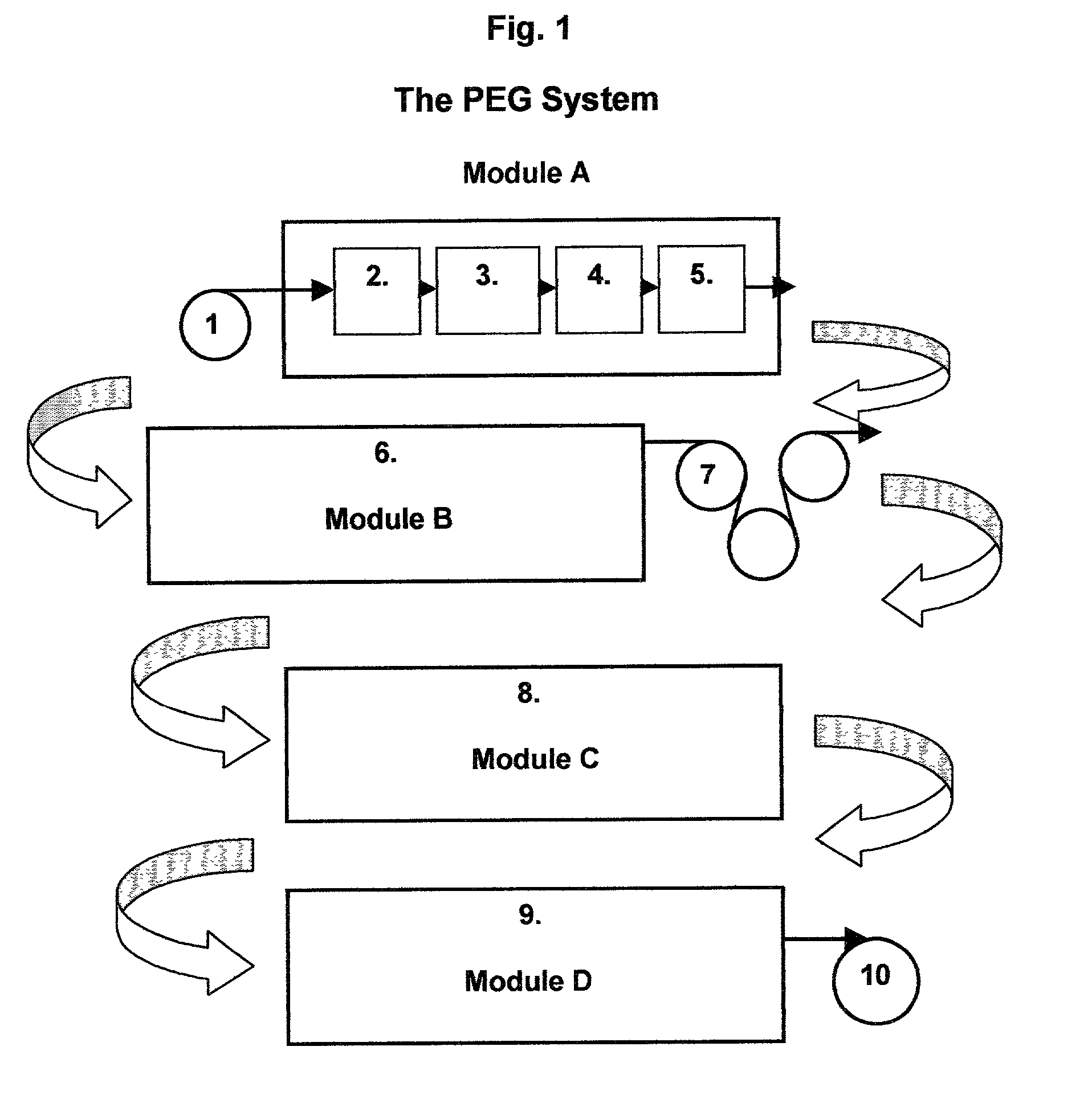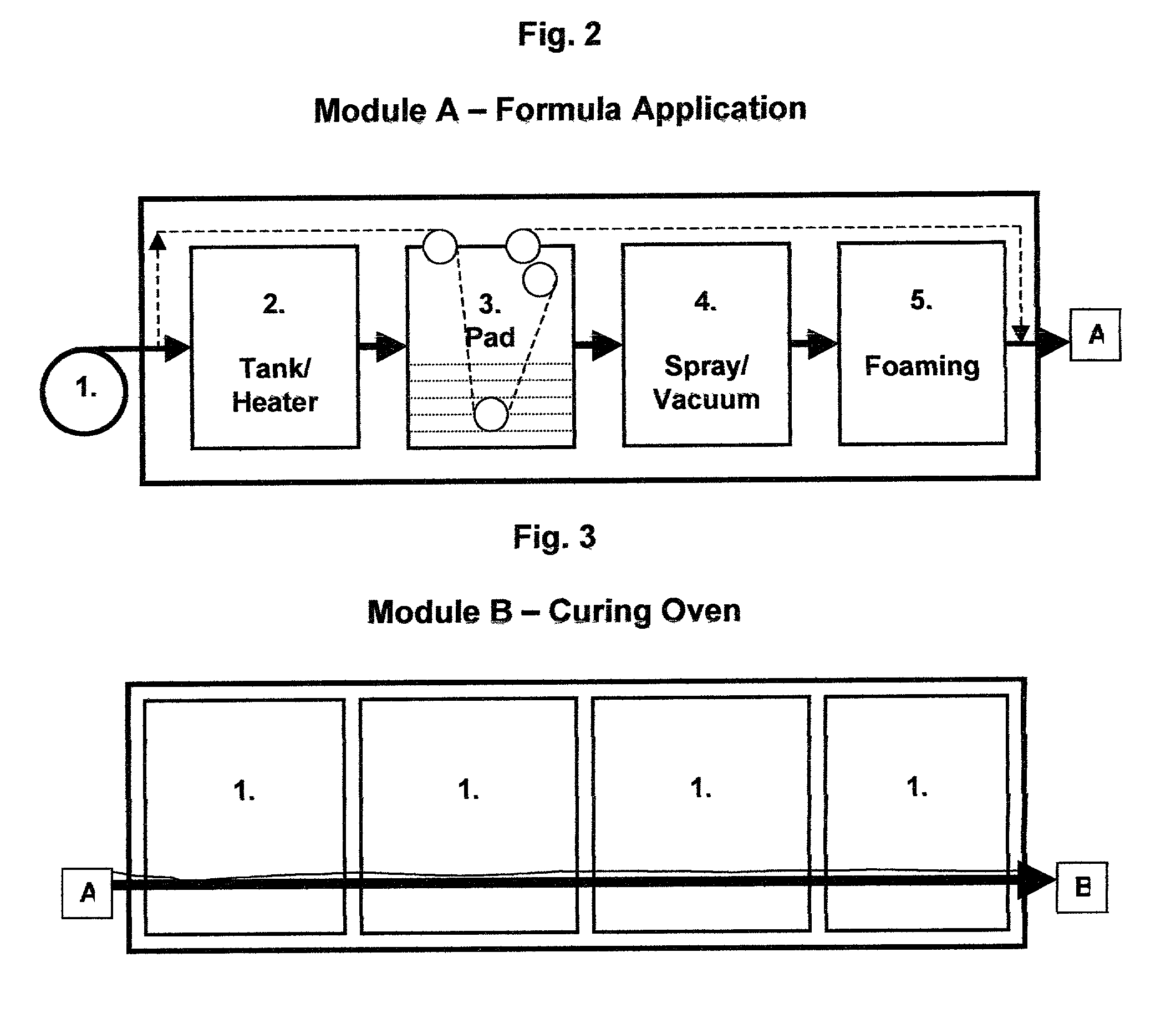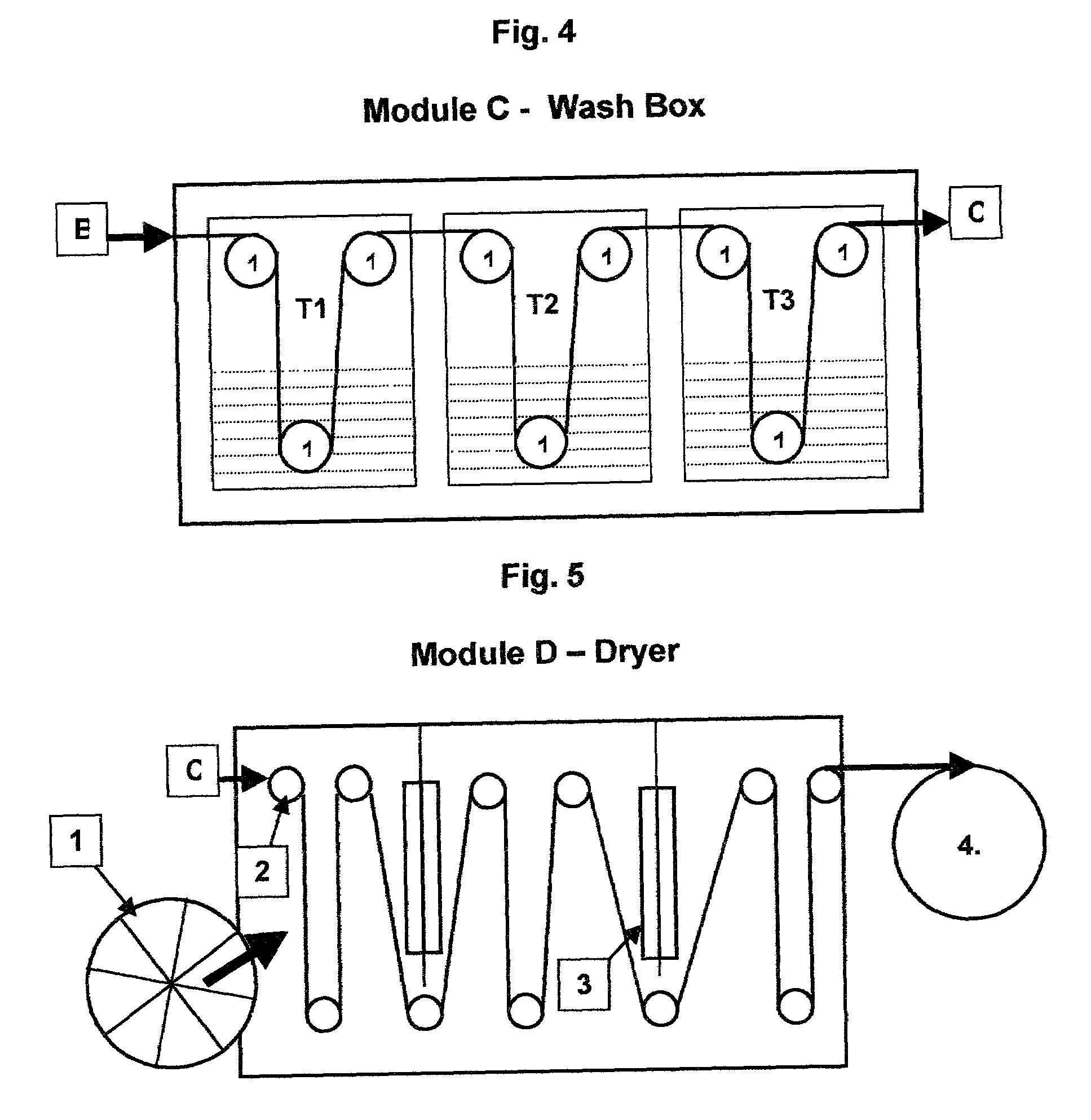Polyethylene glycol saturated substrate and method of making
a polyethylene glycol and substrate technology, applied in the field of modified textile fibers, can solve the problems of poor quality products, unfavorable economic benefits, and unfavorable environmental protection, and achieve the effects of improving the loft and hand of a treated structure, increasing and improving the abrasion resistance and durability
- Summary
- Abstract
- Description
- Claims
- Application Information
AI Technical Summary
Benefits of technology
Problems solved by technology
Method used
Image
Examples
example 1
[0060]In the first instance, an open-width, shirt weight fabric is to be treated with a particular PEG formula, then cured and neutralized. In this case, the PEG formula is maintained at a temperature of about 114° F. (45° C.) in an on-line formulation holding tank (2) (employing a PEG molecular weight of 1450). The PEG formula is applied using a PAD (3) and the fabric is then fed into the oven (6), and / or passed over drying cans (7) for drying and curing. Because the shirt weight fabric weighs only about 4 ounces per square yard, the target weight for dry (weight after curing) PEG formula add-on is approximately 30%.
[0061]The combined weight of the substrate and PEG after application and curing is about 5.2 ounces per square yard. Also, because the fabric is lightweight, the pin tenter frame option is selected to hold the fabric in position as it passes through the oven. Additionally, because of the lightweight of the fabric, oven dwell times are reduced thereby increasing the thro...
example 2
[0062]In another instance, a high loft open width nonwovens substrate comprising a blend of 50% wood pulp fibers and 50% polyester is being treated with the PEG formula. The target dry PEG formula add-on, after curing, is about 60%; the weight of the nonwovens substrate before the application of PEG is 6 ounces per square yard. The combined weight of the substrate and PEG after application and curing is about 9.5 ounces. The application for this treated structure is an absorbent incontinent underpad.
[0063]For maximum liquid absorption, the loft, or height of the nonwoven substrate must be maintained. Therefore, for this nonwoven substrate, the PEG formula is applied by spray assembly and vacuum extraction (4). The spray / vacuum module is positioned in front of the curing oven. As the substrate is unwound, roller units are used to route the substrate over and / or around the PAD (3) and through the spray / vacuum unit (5). Because it is desirable to process the nonwovens substrate at the ...
PUM
| Property | Measurement | Unit |
|---|---|---|
| surface temperature | aaaaa | aaaaa |
| temperature | aaaaa | aaaaa |
| weight | aaaaa | aaaaa |
Abstract
Description
Claims
Application Information
 Login to View More
Login to View More - R&D
- Intellectual Property
- Life Sciences
- Materials
- Tech Scout
- Unparalleled Data Quality
- Higher Quality Content
- 60% Fewer Hallucinations
Browse by: Latest US Patents, China's latest patents, Technical Efficacy Thesaurus, Application Domain, Technology Topic, Popular Technical Reports.
© 2025 PatSnap. All rights reserved.Legal|Privacy policy|Modern Slavery Act Transparency Statement|Sitemap|About US| Contact US: help@patsnap.com



